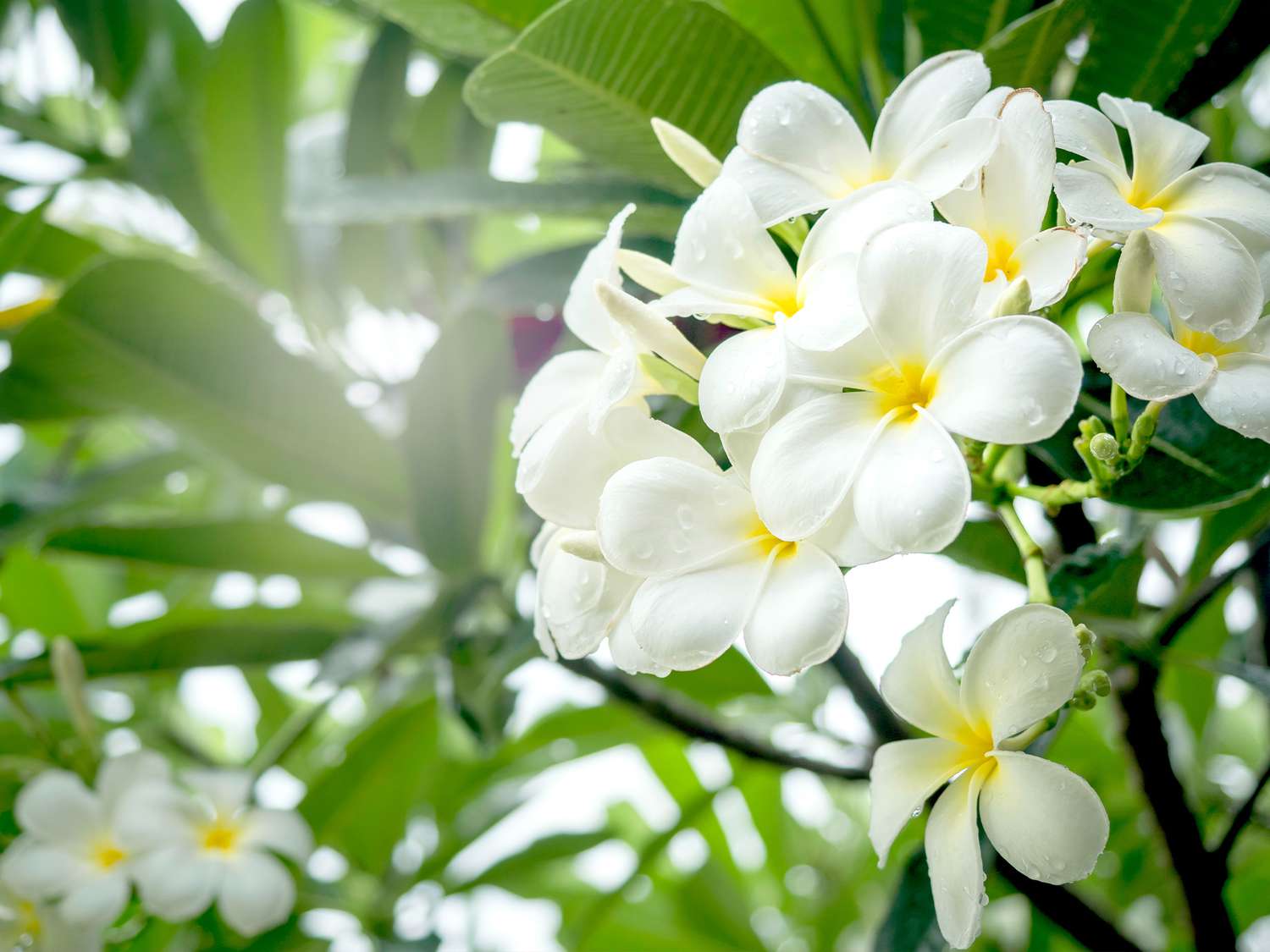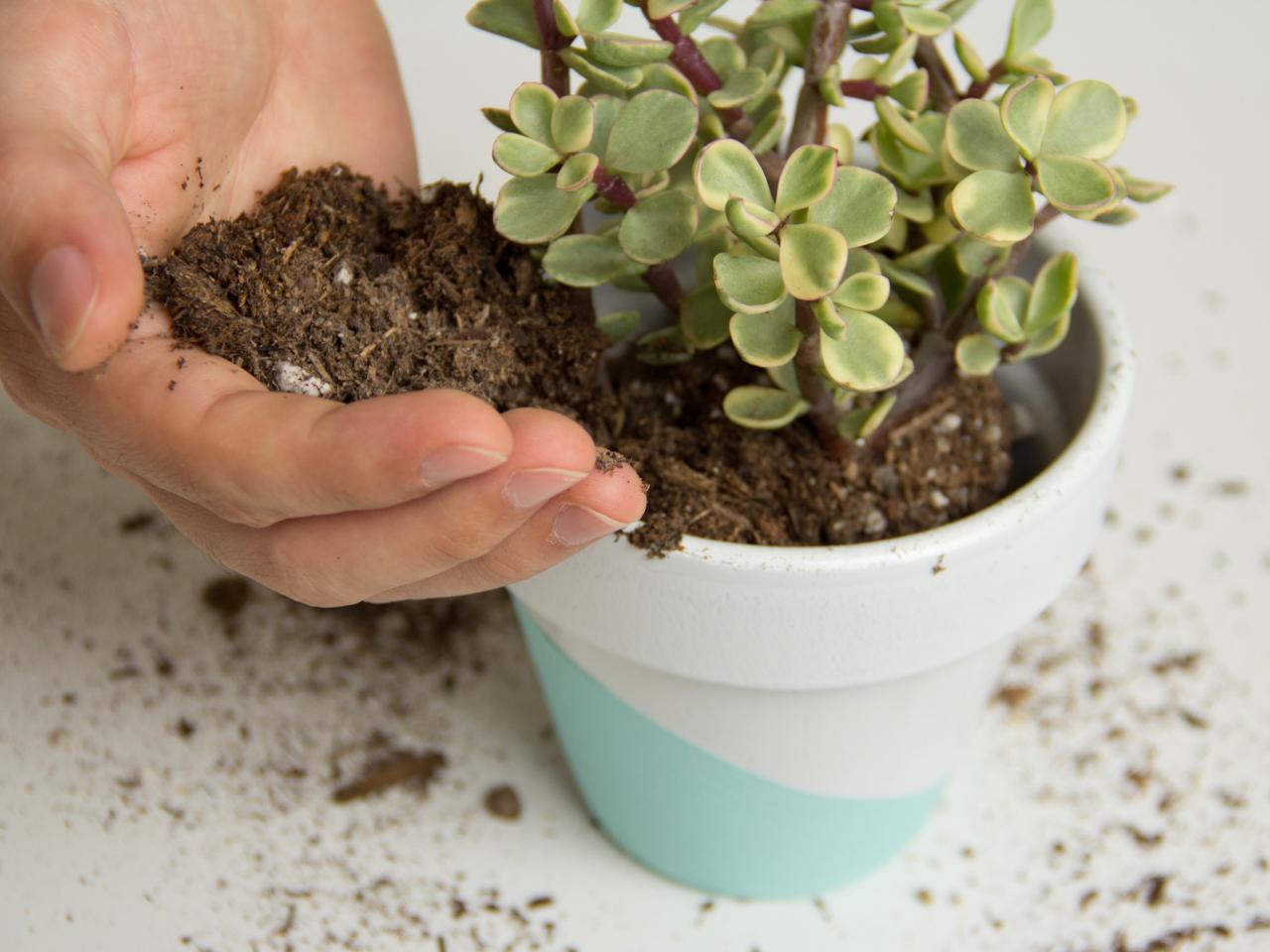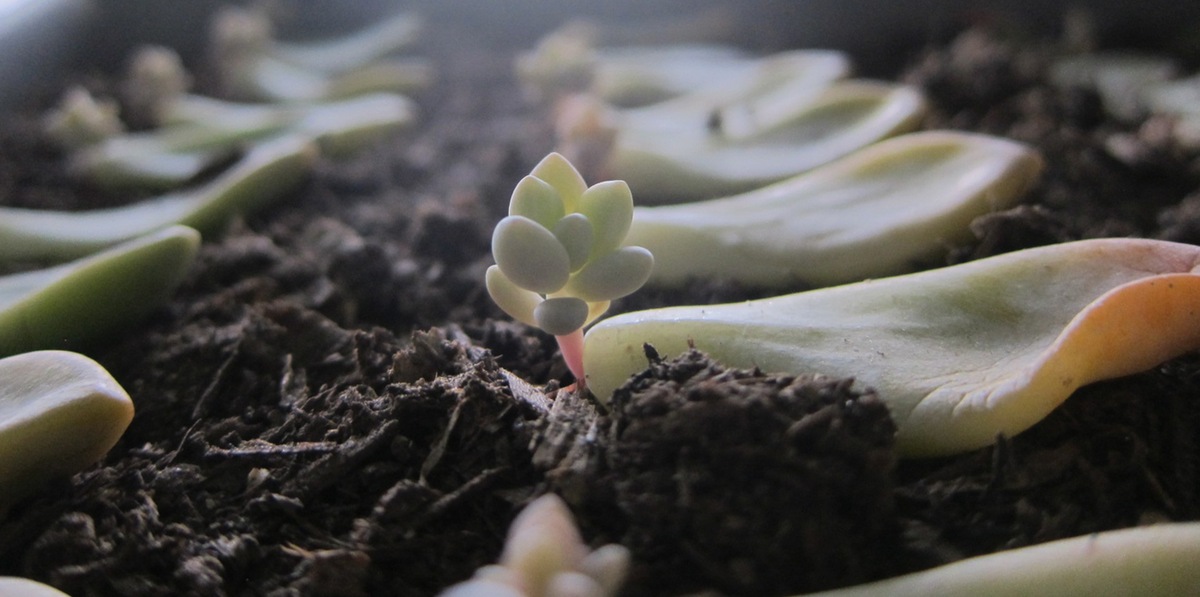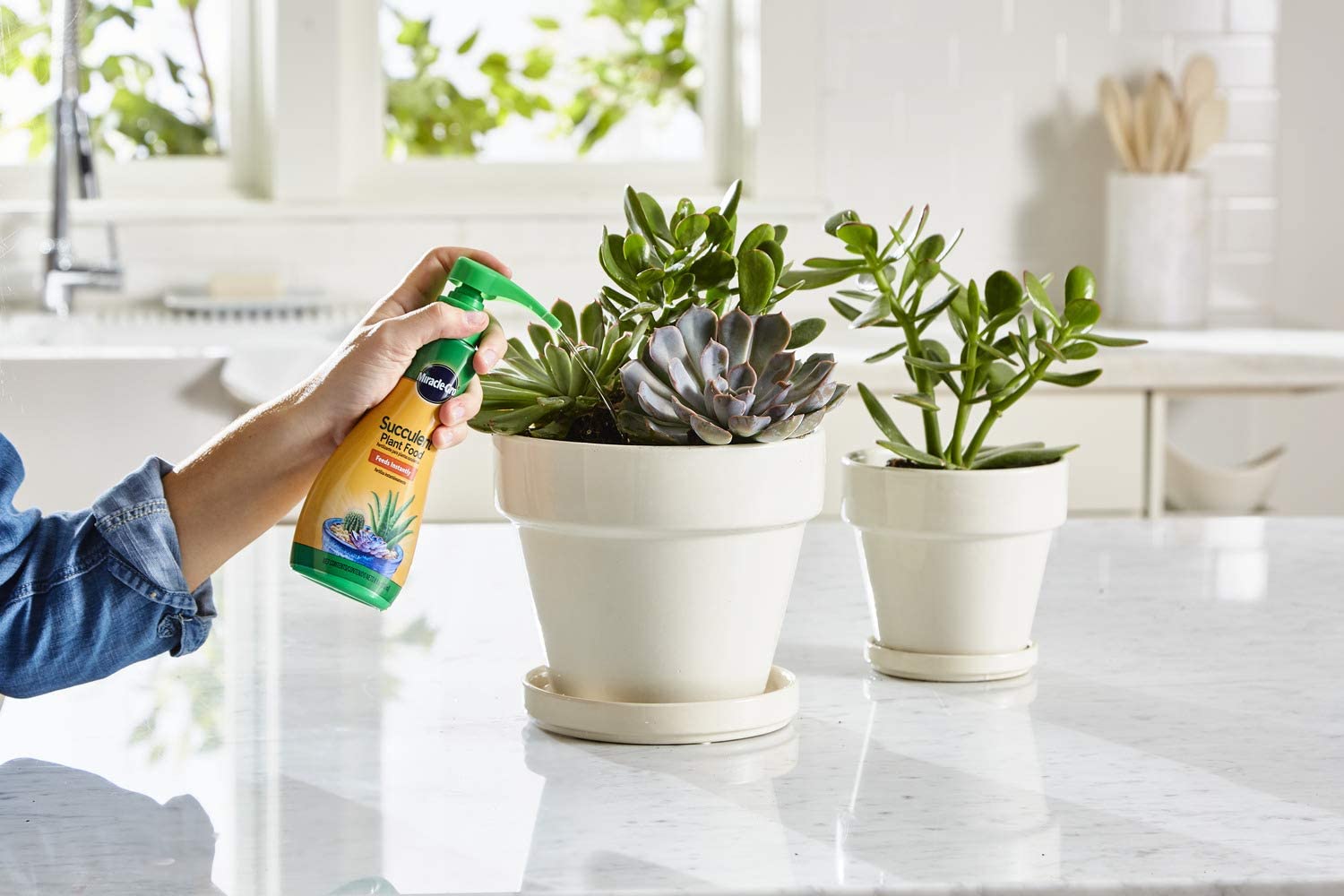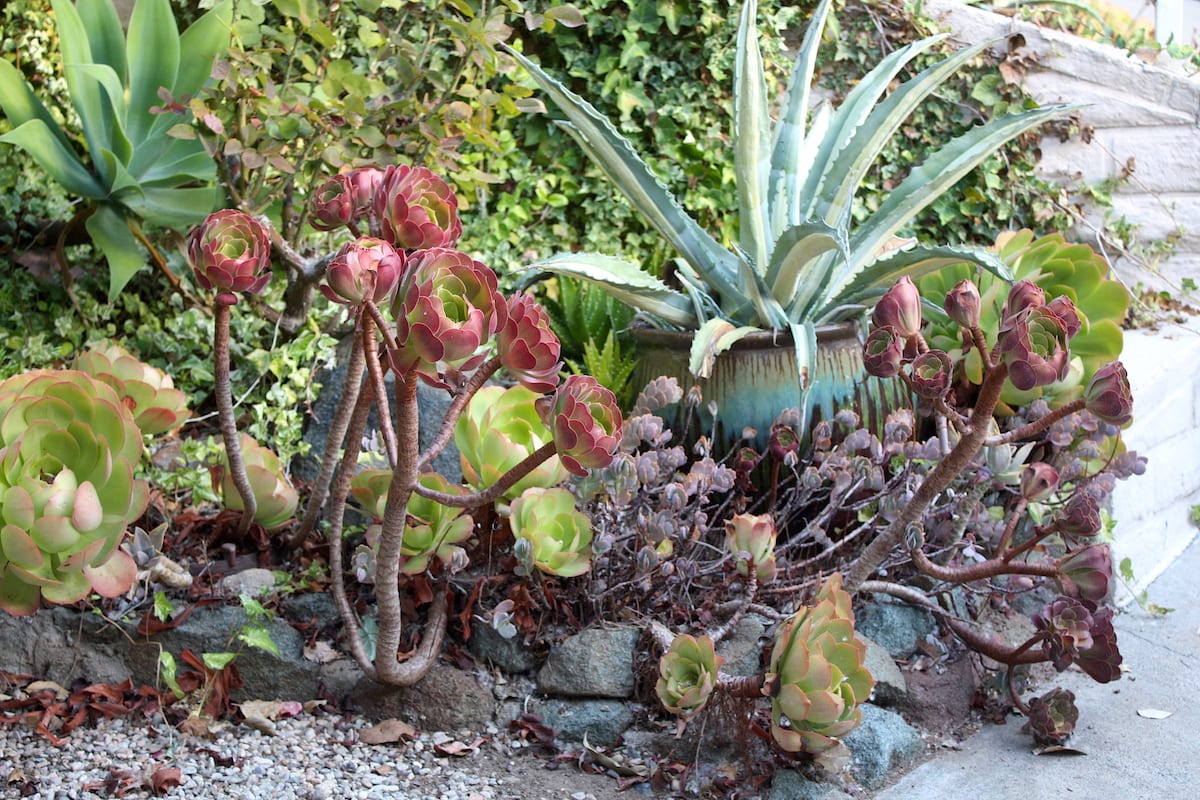Home>Types of Gardening>Ornamental Gardening>What Is The White Stuff On Succulents
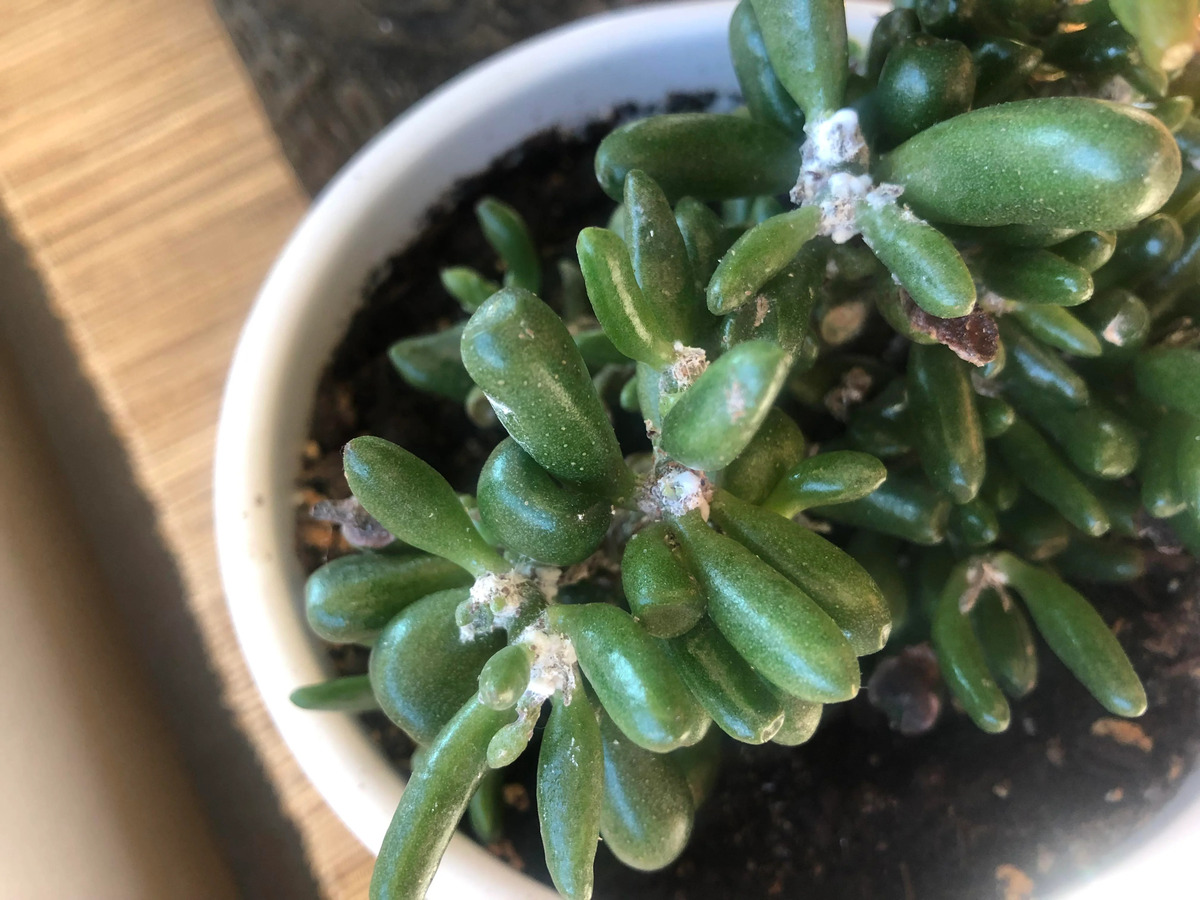

Ornamental Gardening
What Is The White Stuff On Succulents
Modified: January 22, 2024
Discover the causes and remedies for the white substance on succulents in this comprehensive guide. Perfect for ornamental gardening enthusiasts.
(Many of the links in this article redirect to a specific reviewed product. Your purchase of these products through affiliate links helps to generate commission for Chicagolandgardening.com, at no extra cost. Learn more)
Table of Contents
Introduction
Welcome to the fascinating world of ornamental gardening! Whether you’re a seasoned green thumb or a novice just starting out, there’s something enchanting about cultivating beautiful plants and creating a picturesque landscape. One area of ornamental gardening that has gained immense popularity in recent years is succulent gardening – the art of growing a diverse range of unique and resilient succulent plants.
Succulents have captured the hearts of many gardening enthusiasts due to their eye-catching shapes, vibrant colors, and low-maintenance nature. These fleshy, water-storing plants have adapted to thrive in arid environments, making them perfect companions for those with busy schedules or limited gardening experience.
However, as with any living organism, succulents are susceptible to certain issues that can affect their health and appearance. One common problem that succulent owners face is the development of a white, powdery substance on the leaves and stems of their plants. This white stuff can be alarming and may leave you wondering what is causing it and how to best address the issue.
In this article, we will explore the various factors that can lead to the formation of the white substance on succulents, understand the potential causes behind it, and discuss effective ways to treat and prevent it. By gaining a deeper understanding of this phenomenon, you will be equipped with the knowledge to maintain the health and beauty of your beloved succulents.
Understanding Succulents
Before we delve into the causes and treatment of the white stuff on succulents, let’s take a moment to understand these remarkable plants. Succulents are a diverse group of plants that have evolved unique adaptations to survive in dry or arid conditions.
One defining characteristic of succulents is their ability to store water within their leaves, stems, or roots. This water-storing capacity allows succulents to withstand long periods of drought, making them highly resilient and low-maintenance plants.
Succulents come in a wide range of shapes, sizes, and colors, offering endless possibilities for creativity in ornamental gardening. Some popular succulent varieties include Echeverias, Aloe vera, Sedums, and Crassulas.
Due to their unique morphological features and water-storing capabilities, succulents have gained immense popularity as indoor and outdoor plants. Their ability to thrive in various climates and adapt to different growing conditions makes them a favorite choice for both beginners and experienced gardeners alike.
In addition to their aesthetic appeal, succulents also provide several benefits to the environment. The thick leaves of succulents act as natural air purifiers, removing toxins and impurities from the surrounding air. Furthermore, their efficient water usage helps in conserving this precious resource, making them an eco-friendly choice for gardening enthusiasts.
However, despite their resilience, succulents are not immune to certain problems and infections that can affect their overall health and appearance. One such issue is the development of a powdery white substance on their foliage, which can be a cause for concern for many succulent owners.
Now that we understand the basic characteristics and value of succulents, let’s explore the possible causes behind the white stuff on succulents and how to effectively address this issue to ensure the well-being of these remarkable plants.
What Causes the White Stuff on Succulents
As a succulent owner, you may have noticed a powdery white substance forming on the leaves and stems of your plants. Understanding the causes behind this phenomenon is crucial in effectively addressing the issue and preventing further damage to your succulents.
One common cause of the white stuff on succulents is an infestation of mealybugs. Mealybugs are tiny, soft-bodied insects that suck sap from plants, leaving behind a white, cottony residue. These pests can quickly multiply and spread throughout your succulent collection, leading to stunted growth and a weakened plant.
Another culprit behind the white substance on succulents is scales. Scales are small insects that attach themselves to the stems and leaves of plants, feeding on the plant sap. Like mealybugs, scales secrete a sticky, white substance known as honeydew, which can attract other pests and promote the growth of black sooty mold.
In some cases, the white stuff on succulents may be a symptom of a fungal infection, such as fusarium. Fusarium is a type of fungus that can attack succulent plants, causing wilting, yellowing, and the development of a white, powdery coating. This fungal infection can weaken the plant’s immune system, making it more susceptible to other diseases and pests.
Powdery mildew is another fungal infection that can result in a fuzzy, white coating on succulents’ leaves. This powdery substance is a sign of excessive humidity and poor air circulation, creating an ideal environment for the growth and spread of the fungus.
While mealybugs, scales, and fungal infections are the most common causes of the white stuff on succulents, there can be other factors at play as well. Overwatering, excess fertilizer, and environmental conditions like high humidity or low light levels can also contribute to the development of the powdery white substance.
Now that we have identified the potential causes, in the next section, we will discuss effective ways to treat and prevent the white stuff on succulents, ensuring their continued health and vitality.
Mealybugs: A Common Culprit
One of the most common causes of the white stuff on succulents is an infestation of mealybugs. Mealybugs are small, soft-bodied insects that feed on the sap of plants, causing damage and leaving behind a white, cottony residue.
Identifying mealybugs on your succulents is relatively easy. They are typically found in clusters, often hiding in the joint areas between leaves and stems or beneath the leaves. Mealybugs can range in color from white to a pale yellow, and they may appear fuzzy or cotton-like due to the wax they produce as a protective covering.
To treat mealybug infestations, there are various methods you can employ. One option is to physically remove them by gently wiping them off the plant using a cotton swab or a soft cloth dipped in rubbing alcohol. Alternatively, you can use a strong jet of water to dislodge the bugs from the plant.
If the infestation is severe, you may need to resort to natural or chemical insecticides specifically formulated to target mealybugs. Be sure to follow the instructions on the product carefully and apply it at the recommended frequency to effectively control the infestation.
Preventing mealybug infestations is key to safeguarding your succulents’ health. Regularly inspect your plants for any signs of mealybugs or their white residue. Quarantine new plants before introducing them to your collection to ensure they are free from pests. Additionally, maintaining good air circulation, avoiding overwatering, and providing adequate sunlight can help create an environment that is less favorable for mealybugs to thrive.
Remember, early detection and prompt action are crucial in preventing the spread of mealybugs to other succulents in your collection. By staying vigilant and implementing appropriate control measures, you can effectively combat mealybug infestations and keep your succulents healthy and vibrant.
Scales: Another Common Cause
Another common culprit behind the white stuff on succulents is scales. Scales are small, immobile insects that attach themselves to the stems and leaves of plants, sucking the sap and causing damage. Like mealybugs, scales leave behind a white, sticky substance known as honeydew.
Identifying scale infestations can be challenging as they often camouflage themselves, appearing as small bumps or shells on the surface of the plant. These bumps can vary in color, from white to brown or black, depending on the species and stage of development. The white residue they leave behind is a result of the excess honeydew they excrete.
To treat scale infestations, it is important to remove the insects effectively. Manual removal can be done by gently scraping the scales off the plant using a soft brush or your fingernail. Alternatively, you can use a cotton swab dipped in rubbing alcohol to dab and remove the scales.
For larger infestations, you may need to consider using horticultural oils or insecticidal soaps as they can suffocate and kill the scales. Apply these products according to the instructions provided on the label, making sure to cover all affected areas of the plant. Repeat the treatment as necessary to ensure the complete eradication of scales.
Prevention is crucial in managing scale infestations. Regularly inspect your succulents for any signs of scales or the white, sticky residue they leave behind. If you notice any infested plants, isolate them immediately to prevent the scales from spreading to other healthy succulents.
Creating a favorable environment for your succulents can also help prevent scale infestations. Provide sufficient sunlight, ensure proper airflow, and avoid overcrowding your plants. Additionally, practicing good hygiene by regularly cleaning your plants and removing dead leaves or debris can help discourage the presence of scales.
By staying vigilant and taking proactive measures to combat scale infestations, you can keep your succulents beautiful and free from the white stuff caused by these pesky insects.
Fusarium: A Fungal Infection
Another potential cause of the white stuff on succulents is a fungal infection known as Fusarium. This fungal disease can significantly impact the health and appearance of your succulent plants.
One common symptom of Fusarium infection is the development of a powdery white coating on the leaves and stems of your succulents. This coating is actually a mass of fungal spores, which spread easily and can quickly infect other nearby plants.
Fusarium infections are often accompanied by other signs, such as stunted growth, wilted or discolored leaves, and overall plant decline. The fungus attacks the vascular system of the plant, blocking water and nutrient flow and weakening the succulent’s overall immune system.
Preventing and treating Fusarium infections can be a challenge, but understanding the conditions that favor fungal growth can help minimize the risk. Fusarium thrives in warm and damp environments, so it is important to provide adequate ventilation and avoid overwatering your succulents.
If you suspect a Fusarium infection in your succulents, it is crucial to act promptly. Start by isolating the infected plant to prevent the spread of the fungus to other healthy plants. Remove any affected leaves or stems and dispose of them properly, away from your other plants.
Fungicides specifically formulated for Fusarium can be used as a treatment option. Follow the instructions on the product carefully, applying the fungicide to the affected areas of the succulent. Repeat the treatment as necessary, keeping in mind that it may take time to completely eradicate the fungus.
In addition to treating the infected plants, it is important to monitor the environmental conditions and adjust them as needed. Ensure proper air circulation, increase spacing between plants, and avoid waterlogging the soil. Providing optimal growing conditions for your succulents can help them recover from Fusarium infection and prevent future occurrences.
Remember, prevention is key when it comes to Fusarium and other fungal infections. Maintaining good sanitation practices, such as regular cleaning of your gardening tools and containers, can help reduce the risk of fungal diseases affecting your succulents. Additionally, sourcing healthy plants from reputable nurseries and practicing proper plant care can go a long way in preventing fungal infections.
By being vigilant and taking proactive measures, you can minimize the risk of Fusarium infection in your succulents and maintain their health and beauty.
Powdery Mildew: A Fuzzy White Coating
Powdery mildew is another common fungal infection that can result in the development of a fuzzy white coating on the leaves of succulent plants. This fungal disease is caused by various species of fungi and can affect a wide range of plants, including succulents.
Powdery mildew typically manifests as a powdery white or grayish coating on the leaves, stems, and sometimes even flowers of the affected succulents. This fuzzy substance is a mass of fungal spores and mycelium, which can spread rapidly if left untreated.
The development of powdery mildew is favored by high humidity and poor air circulation, creating an ideal environment for the fungus to thrive. Overcrowded plants, excessive moisture on the foliage, and lack of sunlight can contribute to the onset of powdery mildew in succulents.
To treat powdery mildew on succulents, it is crucial to act as soon as you notice the symptoms. Start by isolating the infected plant to prevent the spread of spores to other healthy plants. Use a soft brush or cloth to gently wipe away the powdery substance from the leaves and stems.
There are various organic and chemical fungicides available that can effectively control powdery mildew. Follow the instructions on the product carefully, applying the fungicide to all affected areas of the succulent. Repeat the treatment as necessary, ensuring thorough coverage to eliminate the fungal infection.
Preventing powdery mildew in succulents is possible through certain preventive measures. Provide proper air circulation by spacing out your plants and avoiding overcrowding. Prune and remove any dead or infected plant parts to reduce the risk of fungal growth. Water your succulents in a manner that does not leave the foliage wet for extended periods, especially during humid weather. Additionally, ensure that your succulents receive adequate sunlight, as this helps reduce the chances of powdery mildew development.
Regularly monitoring your succulents for the early signs of powdery mildew, such as the presence of white powdery patches, can help catch the infection before it spreads. By promptly treating and managing powdery mildew and implementing preventive practices, you can keep your succulents free from the fuzzy white coating caused by this fungal disease.
Other Possible Causes
While mealybugs, scales, fusarium, and powdery mildew are common causes of the white stuff on succulents, there are other potential factors that can contribute to this issue. It is essential to consider these possibilities to accurately identify and address the problem.
Overwatering is a common mistake in succulent care that can result in the development of a white powdery substance. When succulents are watered too frequently or the soil becomes waterlogged, it creates a humid environment that promotes fungal growth. To avoid overwatering, make sure the soil is dry before watering again and adjust your watering schedule based on the specific needs of your succulents.
Excessive fertilizer application can also lead to a white substance on succulents. When too much nitrogen is applied, it can cause a buildup of salts on the leaves, resulting in a powdery or crusty residue. Ensure you are using a balanced fertilizer for succulents and follow the recommended dosage to prevent excessive salt accumulation.
Inadequate sunlight can hinder the proper growth and development of succulents, potentially leading to a pale or white appearance on the leaves. Lack of sunlight can also weaken succulents and make them more susceptible to fungal infections. Place your succulents in areas where they can receive adequate sunlight, preferably six to eight hours of indirect or direct sunlight daily.
Certain environmental conditions, such as high humidity levels, poor air circulation, or low temperatures, can contribute to the formation of the white substance on succulents. These conditions create an ideal breeding ground for fungi and pests. Take steps to improve ventilation, adjust temperature, and reduce humidity in the vicinity of your succulents to discourage the growth of unwanted substances.
When trying to determine the cause of the white stuff on your succulents, it is important to consider all of these potential factors. Evaluate the specific conditions and care routine for each individual plant to diagnose the problem accurately.
Remember, prevention through proper care and maintenance is key in minimizing the occurrence of white substances on succulents. By providing appropriate growing conditions, regular monitoring, and prompt action, you can keep your succulents looking healthy and vibrant, free from the unsightly white residue.
How to Treat the White Stuff on Succulents
Addressing the white stuff on succulents requires a targeted approach based on the specific cause. Here are some effective treatment methods to help restore your succulents’ health and beauty:
1. Identify the cause: Before starting any treatment, it is important to accurately identify the cause of the white substance. Look for signs of mealybugs, scales, fungal infections, or any other potential factors discussed earlier.
2. Physical removal: For pests like mealybugs or scales, manually removing them from the affected succulents is a good first step. Use a cotton swab dipped in rubbing alcohol to gently wipe them off, or spray a strong jet of water to dislodge them from the plant.
3. Natural remedies: There are several natural remedies you can try to treat the white substance on succulents. Neem oil, diluted in water, can be effective against pests and some fungal infections. A solution of baking soda mixed with water can help control powdery mildew. Apply these solutions to the affected areas as directed.
4. Chemical treatments: If the infestation or infection is severe, you may need to resort to chemical treatments. Look for insecticides or fungicides specifically formulated for succulents and follow the instructions provided. Ensure proper ventilation and use protective gear when applying these products.
5. Adjust growing conditions: To prevent further issues, assess the environmental conditions for your succulents. Provide adequate sunlight, ensure proper air circulation, and avoid overwatering. Creating a healthy and balanced environment will help your succulents recover and grow stronger.
6. Quarantine: If you have multiple succulents, isolate any infected plants to prevent the spread of pests or fungal spores. This will protect your healthy plants and allow you to focus on the treatment of the affected succulents.
7. Monitor and repeat: Regularly monitor the progress of your treatment and be prepared to repeat it if necessary. Some infestations or infections may require multiple rounds of treatment for complete eradication.
Remember, the key to successful treatment is early detection and a proactive approach. By promptly addressing the white substance on your succulents and providing appropriate care, you can restore their health and ensure long-lasting beauty.
Prevention and Care Tips
Preventing the occurrence of the white substance on succulents is crucial in maintaining their health and vitality. Implementing the following prevention and care tips will help ensure that your succulents thrive:
1. Proper watering: Water your succulents sparingly and only when the soil is completely dry. Overwatering can create a humid environment that promotes fungal growth and attracts pests.
2. Adequate light: Place your succulents in areas where they can receive sufficient sunlight. Most succulents require at least six to eight hours of indirect or direct sunlight daily. Adjust the positioning of your plants to ensure they receive optimal light conditions.
3. Good air circulation: Proper airflow is essential for succulents to thrive. Ensure there is sufficient space between your plants to allow air to circulate freely. Regularly open windows, use fans, or move your succulents outdoors periodically to enhance air circulation.
4. Avoid overfertilization: Use a well-balanced fertilizer formulated specifically for succulents. Follow the recommended dosage and frequency to prevent the buildup of salts, which can lead to white crusty residue on the leaves.
5. Regular cleaning: Keep your succulents clean and free from debris. Regularly remove dead leaves, fallen petals, or any other organic matter that could attract pests or create a breeding ground for fungal infections.
6. Quarantine new plants: Before introducing new succulents to your collection, isolate them for a period of time to ensure they are free from pests or diseases. This will help prevent the spread of potential issues to your existing plants.
7. Practice good hygiene: Clean your gardening tools and containers regularly to minimize the risk of transferring pests or pathogens. Use a mild detergent or bleach solution to sanitize your tools before and after use.
8. Monitor and inspect: Regularly inspect your succulents for any signs of pests, fungal infections, or the development of the white substance. Early detection allows for prompt treatment and reduces the risk of further spreading to other plants.
9. Seek professional advice: If you’re uncertain about the cause of the white substance or need guidance on treatment, consult with a local horticulturist or a plant care specialist who can provide expert advice specific to your region and succulent varieties.
By following these prevention and care tips, you can create a favorable environment for your succulents, minimize the risk of issues occurring, and ensure their longevity and beauty for years to come.
Conclusion
Caring for succulents can be a rewarding and enjoyable experience, but it’s important to be aware of the potential issues that can arise, such as the development of the white substance on their leaves and stems. By understanding the causes behind this phenomenon and implementing effective treatment and prevention methods, you can ensure the health and beauty of your succulents.
Mealybugs and scales are common culprits behind the white stuff on succulents, while fungal infections like fusarium and powdery mildew can also contribute to the issue. Other factors such as overwatering, excessive fertilizer, inadequate light, or unfavorable environmental conditions can also play a role.
Treating the white substance requires a targeted approach based on the specific cause. This may include physical removal of pests, using natural or chemical treatments, adjusting the growing conditions, and practicing good hygiene. Early detection, prompt action, and regular monitoring of your succulents are essential in preventing the spread of pests and infections.
Prevention is key in maintaining the health of your succulents. Proper watering practices, providing adequate light and air circulation, avoiding overfertilization, regular cleaning, and quarantining new plants are all important steps in preventing problems from occurring. Monitoring your succulents for signs of pests or diseases and seeking professional advice when needed can further enhance their well-being.
By following these guidelines and continuously learning about the care requirements of your succulents, you can create an environment in which they can thrive and showcase their natural beauty. Enjoy the journey of tending to your succulents and the joy they bring to your ornamental garden.


